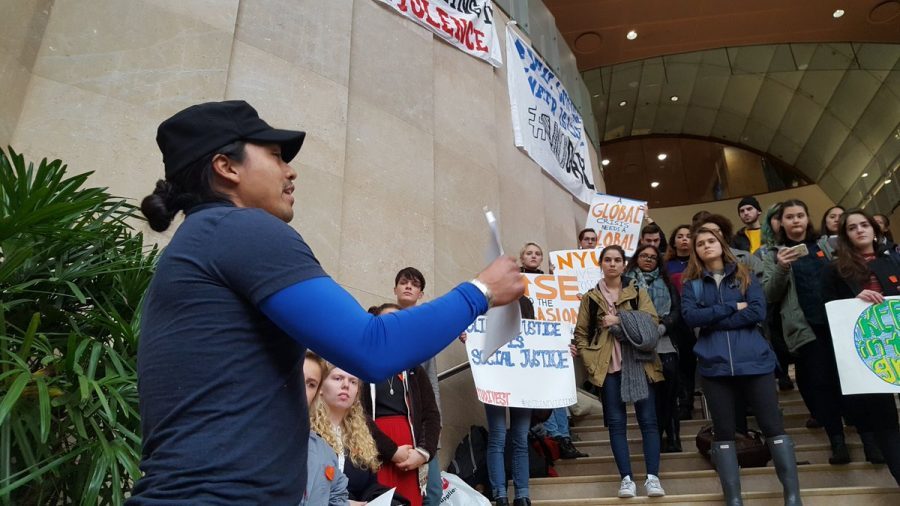Talking With an NYU Student Who Went to Standing Rock
NYU students added their voices to the protests against the Dakota Access Pipeline last month.
December 7, 2016
The U.S. Army Corps of Engineers announced on Sunday that it would pause the production of the Dakota Access Pipeline and would not pass through the Standing Rock Preservation. Supporters of the #NoDAPL movement celebrated both at Standing Rock and on social media.
Over the course of nearly a year, protesters from across the country went to the Standing Rock Indian Reservation and protested the pipeline construction — among them were some NYU students.
Washington Square News got a chance to speak with GLS junior Taylor Norman, who went to Standing Rock for two days to help deliver supplies and determine how to prepare for future trips. She identifies as Mvskoke and serves as the Native American and Indigenous Students’ Group co-president.
Washington Square News: What motivated you to go to Standing Rock to protest?
Taylor Norman: As a Native person, Standing Rock, as a whole, has been such a momentous event because of the sheer volume of solidarity between Indigenous people here and abroad. DAPL is not unique in that it is yet another corporation infringing on Indigenous sovereignty and endangering our environment. Rather, what makes the situation stand apart has been our ability to come together as water protectors and fight not only the pipeline, but also what it represents. This being said, I wanted to go so I could stand with my people and learn from them so as to prepare for the fights to come. This desire was fulfilled when I was invited by the American Indian Community House, located in Manhattan, to join them as a young, female indigenous student leader for a short trip to deliver supplies.
WSN: Can you describe what the experience at Standing Rock was like? What did you do and what kinds of people did you meet?
TN: I would call my experience bittersweet. To be surrounded by indigenous people and be in prayer and ceremony throughout the day was perhaps one of the most beautiful things I have ever experienced. My first night, I had the opportunity to eat corn soup and fry bread at the Haudenosaunee (Iroquois, based in upstate NY) camp and bond with our neighbors to the North. However, the beauty did not negate the fact that we were fighting for clean drinking water and sovereignty. It did not erase the unease I felt at watching high school-aged warriors go off to be maced and beat and attacked by dogs. There was also a problem with non-indigenous squatters taking advantage of the situation and draining camp resources as well as actively disrespecting our elders and our culture. Many have gone out to Standing Rock thinking that this is the new Woodstock or Burning Man and now it is winter. There is no room for wasting resources on people who are not prepared. It must be stressed that Standing Rock is an indigenous space.
WSN: How long were you at Standing Rock for?
TN: I was only at Standing Rock for two days as the main focus of my group was to deliver supplies and figure out how to prepare for future trips to SR or new camps based in NY.
WSN: How did you react to yesterday’s news that the DAPL will not be routed through Standing Rock, though it will still be built?
TN: The denial of the easement certainly was good news to hear. Yes, they will still try to build the pipeline. Yes, there are still loopholes. People must recognize that Natives are the last to trust anything the government says, but, the decision yesterday marked a shift. Now people have seen our power and they have seen that our oil dependency needs reversal. We have been fighting pipelines on native lands for an incredibly long time and any win, no matter how trivial, gives us hope and reinvigorates us as we move forward. Yesterday I saw the news and I felt a jolt of energy in my body. My mind immediately went to the two pipelines to be built in NY (AIM and Pilgrim) and I thought, “Ok, we can fight this. If we keep this up, if we stick together, we can fight this.”
Email Natasha Roy at [email protected].
















































































































































donald kibet • Dec 21, 2016 at 9:01 pm
Iam donald kibet from kenya applying for scholarship please help me ,my number is 0720463594